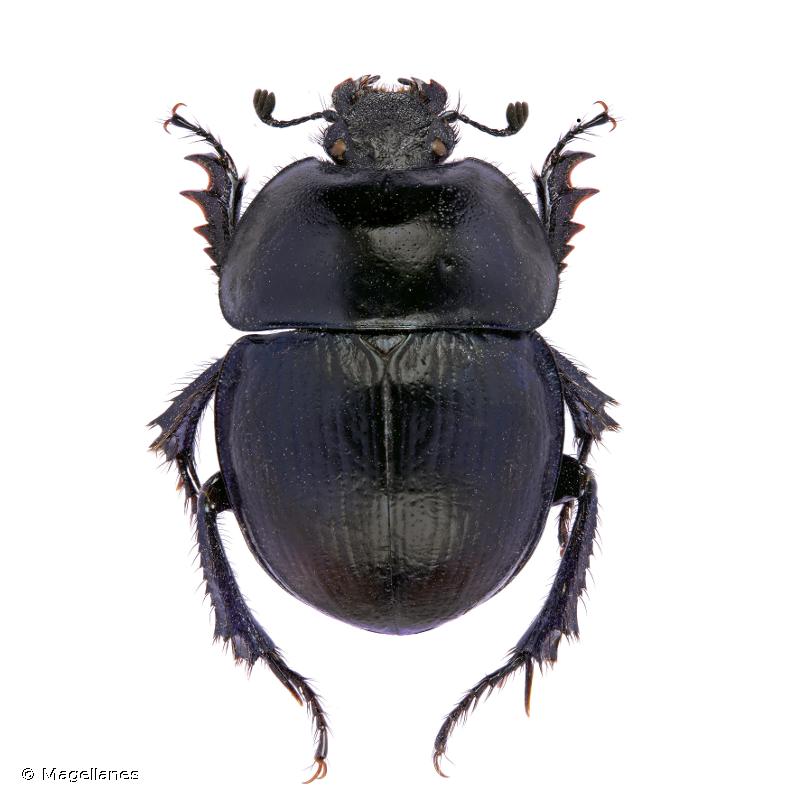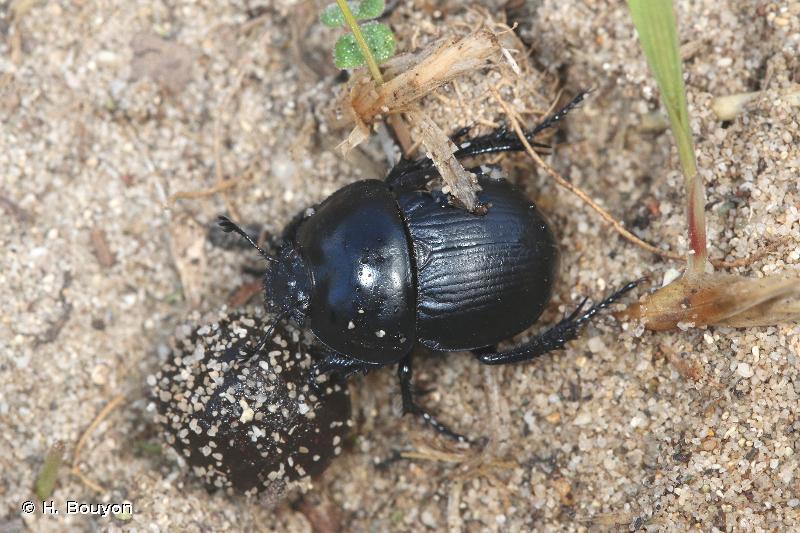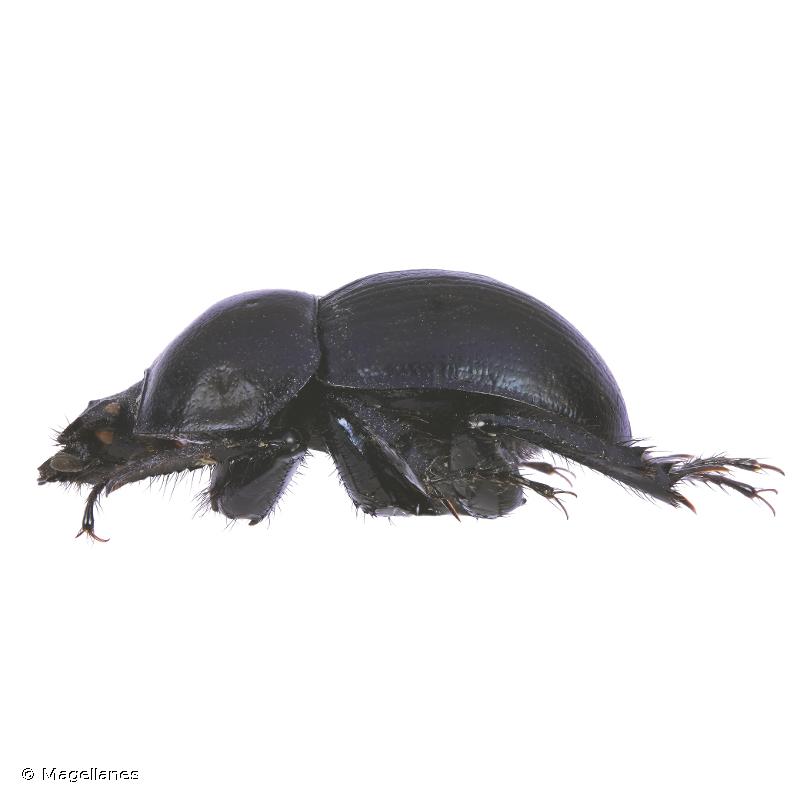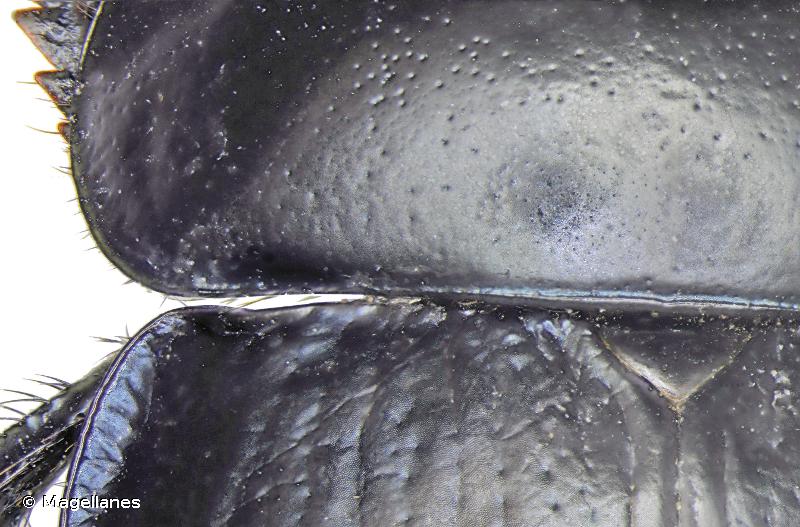
cd_nom

| Author : Magellanes |
 |
To get the picture, please visit:
Any reuse of one or more photographs on this site is subject to an authorization request from the author.
Link to the Code of Intellectual Property (Legifrance)

| Author : H. Bouyon |
 |
To get the picture, please visit:
Any reuse of one or more photographs on this site is subject to an authorization request from the author.
Link to the Code of Intellectual Property (Legifrance)

| Author : Magellanes |
 |
To get the picture, please visit:
Any reuse of one or more photographs on this site is subject to an authorization request from the author.
Link to the Code of Intellectual Property (Legifrance)

| Author : Magellanes |
 |
To get the picture, please visit:
Legend: Pronotum
Any reuse of one or more photographs on this site is subject to an authorization request from the author.
Link to the Code of Intellectual Property (Legifrance)
Taille : 12 à 20 mm
Identification :
Noir peu luisant. Massue antennaire avec le deuxième article libre et aussi long que les deux autres (différence avec les genres Sericotrupes et Geotrupes, chez qui le deuxième article est plus court que les deux autres). Suture élytrale soudée. Absence d'ailes membraneuses. Clypéus avec un tubercule peu élevé. Base du pronotum entièrement rebordée. Ponctuation élytrale assez forte, nette et bien alignée sur les stries. Sternites entièrement ponctués et pileux.
Confusion possible :
Thorectes geminatus (Gené, 1839)
Thorectes intermedius (Costa, 1839)
Périodes d'observation de l'adulte :
Espèce active du printemps à l'été.
Biologie-éthologie :
Espèce sténoèce. Se rencontre que sur le littoral. Ce Thorectes copro-saprophage exploite divers types d'excréments mais se nourrit aussi de cadavres desséchés, de poissons ou d'escargots en décomposition.
Biogéographie :
Endémique corso-sarde. Sa présence en Corse est confirmée par des captures récentes, elle reste cependant très rare.
Références :
Dellacasa (M.), 2004. – Scarabaeoidea “Laparosticta” di Corsica. Atti della Società Toscana di Scienze Naturali, B, vol. 110, supplemento [2003] : 56.
Patrick Prévost(),2020
Continental
Metropolitan France
Overseas
Marine
Metropolitan France
Overseas
The map presents a summary at the 10 x 10 km grid of the observation data for the species transmitted to the SINP. These data have been subjected to validation filters.
The map presents a reference distribution layer of the species at the scale of departments and marine sectors. The presence and absence data were established by expertise within a network of partners. This reference distribution is used in the validation process of the SINP data at the INPN level.
Corresponds to a report on the basis of at least one observation proved within a period of 10 years (20 years for little-known invertebrates) preceding the year and no presumption of extinction since obtaining the last data nor doubt on reproductive and implemented nature of this population. For migratory species, the presence indicated concerns areas of reproduction.
This status is based on one or more of the following criteria:
This point covers the absence, more difficult by nature to demonstrate than presence. This status is based on one or more of the following criteria:
This status must be assigned to a department in which the presence of the species is casual.
Particular case of absence due to a proven extinction less than a half century ago (older disappearances are treated as "no probable or definite").
In the state of knowledge, we can not comment on the presence or absence in the current department. This is the default status when not comprised in one of the previous categories or whenever there is doubt.
The map shows the global distribution of the species based on GBIF data (Global Biodiversity Information Facility).
